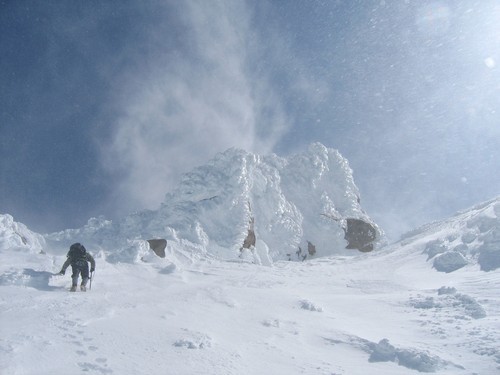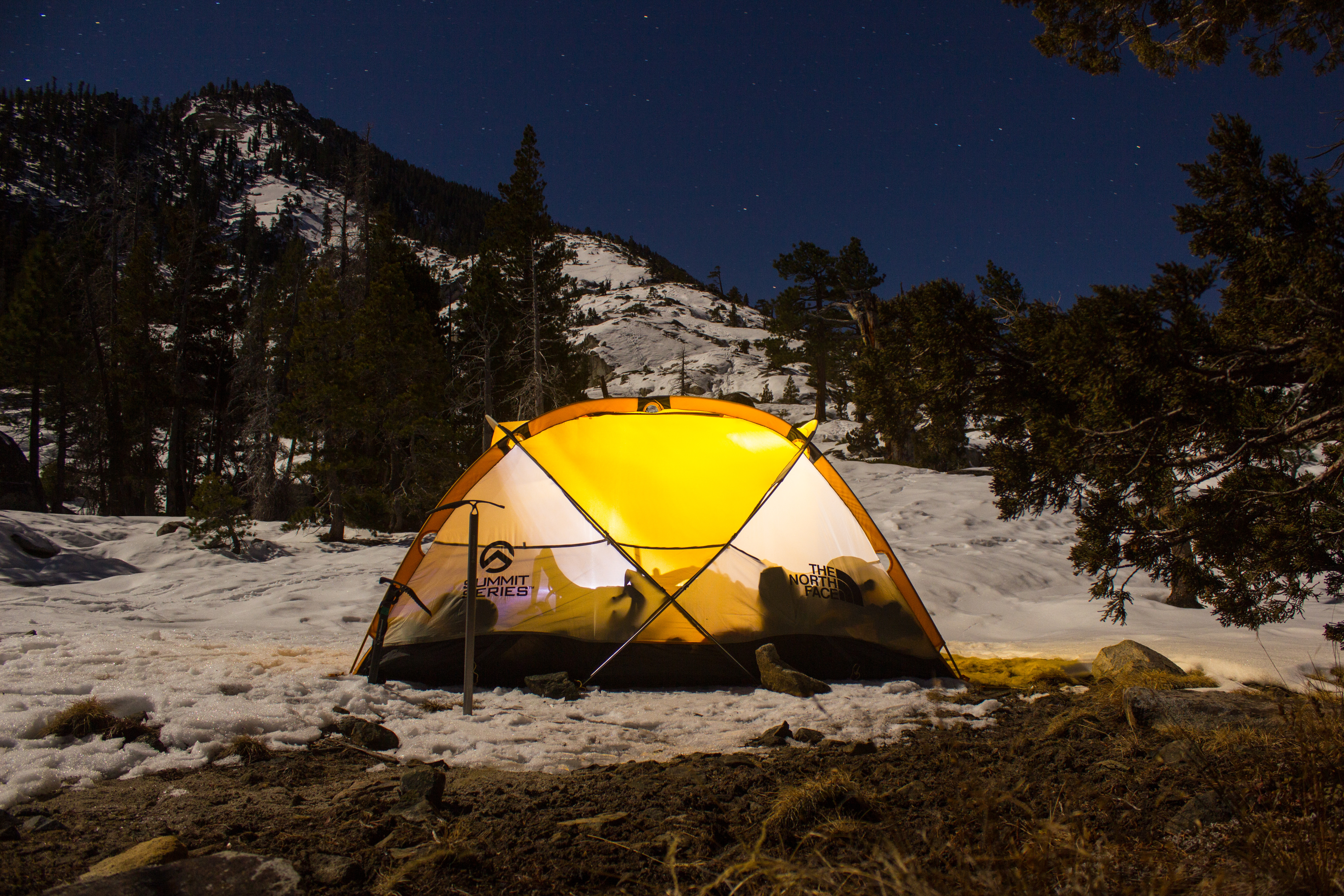
Winter mountaineering - it's cold and crazy out there sometimes!
Over the course of many years camping and climbing in the "off-season" I've picked up a few tips from friends. The following tips are guaranteed to improve your outlook and make the difference between suffering and succeeding when the temps drop and the snow flies.
- Always use an insulating pad for sitting or laying on snow. This rule may seem obvious but actually it easy to ignore...until your butt becomes a block of ice. Take two pads out there with you, one inflatable and one non-inflatable. Use your non inflatable (e.g. "ensolite") pad under your body while sitting down to eat, cook, and of course while sleeping. Double or triple fold your pad for even better isolation from the cold. While sleeping use the inflatable pad over the ensolite pad. Full length pads are better!
- Sleeping bag = clothes dryer. Yes, that's right, your gloves, socks, insoles, and even some layers can all be reclaimed from the icy grip of winter if you bring them in the sleeping bag with you. They may not be bone dry in the morning in some cases, but that's better than throwing them in a corner of the tent to find they are frozen and useless in the morning.
- Everything is insulation. Before nodding off for the night arrange your gear and all the clothes you are not sleeping in anywhere underneath your sleeping bag and around you so that they benefit from your body heat, and you benefit from further isolation from the snow. Your empty backpack, gaiters, rope, and even boots should all be inside your shelter with you, either underneath you or touching you. Leaving your back pack and especially boots outside is a costly mistake - there's no reason they can't be kept drier - and keeping you drier - by being inside your shelter.
- Hot liquids are amazing. It's nearly impossible to have too much hot cocoa, coffee, tea, and instant soup out there. The packets take up virtually no space, and not only will you be warmer you will also stay hydrated. Will you have to get up to pee in the middle of the night? Probably, but it will give you a quiet moment to enjoy the incredible winter night sky.
- Water freezes from the top down. So put your water bottle with the threads down in an insulating parka and you'll never have to fight a frozen waterbottle lid again. Even better, fill it with hot water and put it in your sleeping bag near your feet or belly, and you'll be warmer for most of the night.
- Dry socks and dry gloves are worth the effort. Bring multiple pairs, keep them dry in a ziploc bag and always have at least one dry pair in reserve. Never drop your gloves in the snow. Instead, while not on your hands, gloves should always be kept warm and drying out in your jacket pockets, not left out to freeze somewhere. Keep socks that are drying out in your sleeping bag. Always sleep with a fresh(er), dri(er) pair of socks.
- The right gear makes a difference. It's all about the details. Always get jackets and layers with long sleeves and helmet-compatible hoods. Always have a minimum of three layers available for your lower body and four layers for your upper body. Always bring a beanie, a buff / balaclava, and gaiters. Waterproof your shell layers, gloves and boots every season. Use a compression stuffsack for you sleeping bag and other bulky items. Have multiple headlamps each with their own fresh batteries. Always bring an emergency blanket and/or bivy sack.

MAA members use these skills quite often, whether its winter climbing or July in the Andes at 20,000 feet. We offer our MTN 2: Winter Mountaineering training courses from December through March. Stay dry, warm and happy out there!


